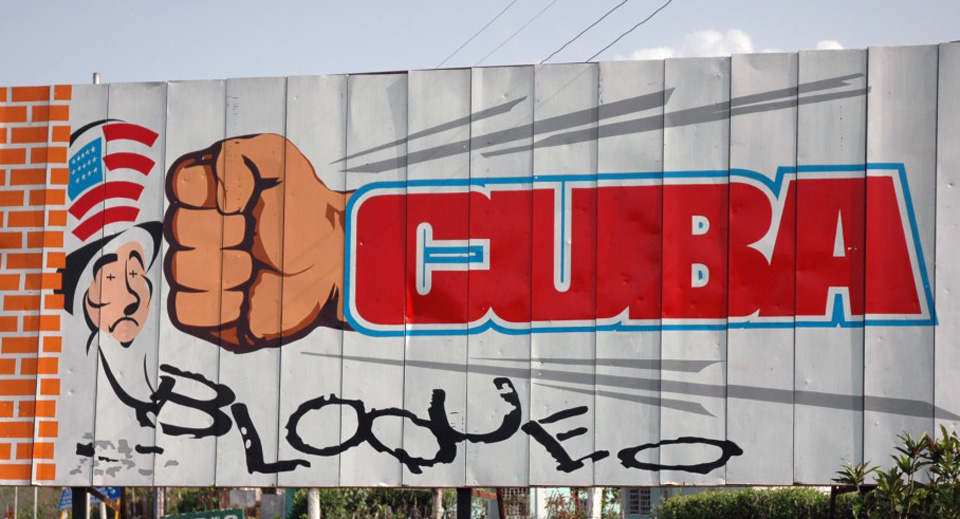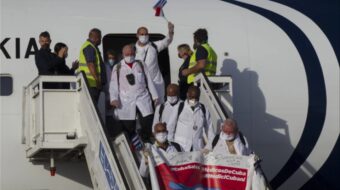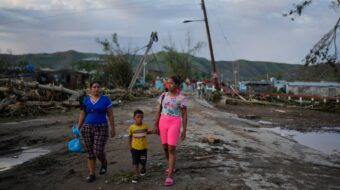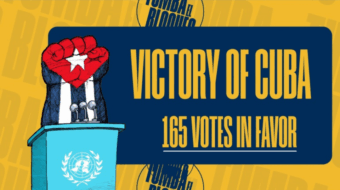
On October 26, for the 25th consecutive year, the United Nations General Assembly will be voting yes or no on a Cuban resolution condemning the U.S. blockade there. U.S. law says: ships docking in Cuba may not visit a U. S. port for the next six months, Cuba may not import products from third countries containing more than 10 percent U.S. components, U.S. companies may neither invest in Cuba nor export goods there (except for food products) nor import Cuban products. Foreign banks may not handle dollars in transactions involving Cuba. The U. S. government enforces these rules by imposing large fines.
The U. S. blockade has existed for 54 years. Almost two years ago President Obama called for its end. Diplomatic relations were restored one year ago. Yet the blockade’s end remains a dream.
Cuba and world opinion do object. Only three nations besides the United States have ever voted against the resolution. In 2015 Israel was the only one. Prior to each United Nations vote, Cuba’s delegation has provided member nations with a report on the blockade’s impact on the Cuban people during the previous year.
People and policy makers have every opportunity to know about the harm U.S. policies inflict upon the Cuban people. This year they need only to consult Cuba’s report to the United Nations released to the public on September 9; it’s at http://www.aaa-cubatours.com/blog.
After reviewing relevant U. S. laws and criticizing President Obama for not fully utilizing executive measures to ease blockade regulations, the report moves on to repercussions on trade with the United States and other countries, Cuba’s limited access to international financial services and investments, the blockade’s impact on third countries, and, lastly, opposition to the blockade throughout the world and in the United States.
Authors of Cuba’s annual reports occasionally emphasize a particular theme: for example, the impact of shortages on people’s health and daily lives, or the genocidal intent of U. S. policies, or problems due to Cuba’s exclusion from international financial services. The current 39- page report is mostly about U. S. interference with Cuba’s economic development. Centering on monetary losses due either to shortages or reduced trade revenues, the report for the most part covers the period from April 2015 to April 2016. The document provides facts, analyses, and voluminous data.
The report relies on dozens of examples to explain how shortages, unavailability, or high costs of materials affect health care, food production, education, transportation, construction, sports, and culture. The resulting problems led to losses that totaled $957,594, 138.
Yet in the year studied, most of the damage, all of it fully documented, came from blockade – imposed restrictions on the marketing of goods and services. Afflicted sectors included tourism, energy and mining, transportation, communications, agricultural (including sugar, tobacco, and rum), and biotechnology. The latter two sectors experienced shortages also. In all, one – year losses from unrealized revenues amounted to $3,149,284,420.
Introducing the report to reporters in Havana, Foreign Minister Bruno Rodríguez declared that, “The blockade endangers the Cuban people. There’s no Cuban family that doesn’t suffer the effects of the blockade … The blockade is the principle cause of our economic problems, the principal obstacle to our development.” According to the report, “Economic repercussions on the Cuban people [over the years] due to the application of the … blockade … total $753,688,000,000.
The report surveyed the situation of foreign banks and other financial institutions being prevented from using dollars in handling Cuba’s transactions with companies and agencies worldwide. Some foreign banks have recently incurred fines involving millions of dollars. The report cited 61 instances of other U. S. actions against foreign banks, among them: accounts closed down, funds held back, bank services refused, letters of credit not processed, and transactions left incomplete. The cumulative effect is intimidation and, for Cuba, reduced access to international financial services.
Cuba’s reports to the United Nations represent a significant contribution to a reservoir of material documenting harm done to the Cuban people. Salim Lamrani’s The Economic War against Cuba (Monthly Review Press, 2013) is another; it presents a clear, concise, and yet comprehensive survey of the U. S. policy of blockade.
Having repeatedly and overwhelmingly approved the annual Cuban resolution, the General Assembly has proclaimed that the Cuban people’s lives do matter. Yet the Cuban people seem to matter to the U. S. government only for their use in serving U.S. purposes. “The embargo was only hurting the Cuban people instead of helping them,” President Obama told a Cuban audience on May 16. 2016. However, there’s every indication that his government seeks to replace a U.S. stick – the blockade – with a carrot – “helping them” – in order to separate the Cuban people from their government.
The U. S. anti-Cuban blockade is, in fact, illegal under international law. For example:
- “The right to development is an inalienable human right.”– United Nations Declaration of the Right to Development, 1986)
- “…respect for the principle of equal rights and self-determination of peoples” – United Nations Charter,
- The “impeding of food and medicines to civilians in time of war is expressly prohibited under customary international law and is codified in the Geneva Conventions.”
- “Since the London Naval Conference of 1908-1909, international law stipulates that a blockade can only be used in wartime.” – Salim Lamrani, Economic War against Cuba, p. 55.
Maybe attention to what matters, in addition to who matters, would strengthen this worldwide campaign for justice.










